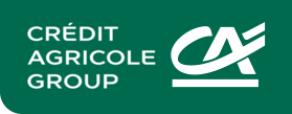
What is the legal value of an electronic signature?
What is the legal value of an electronic signature? What does the case law say when an electronic signature is challenged in court? Why are there different signature levels? Isabelle Renard, a lawyer specialising in new technology law, answers our questions about the legal framework for electronic signatures.
Isabelle Renard: “There needs to be a better understanding of electronic signatures to more effectively guarantee their users’ rights.”
Since when have electronic signatures had the same value as handwritten signatures?
Electronic signatures have had the same legal value as handwritten signatures since the law of 13 March 2000, so for more than 20 years. This law introduced this equivalence, under certain conditions, into the French Civil Code. Napoleon couldn’t have foreseen this of course…
Before the law of 13 March 2000, the signature was not defined in the French Civil Code, as the definition seemed so obvious. This new provision therefore first of all introduces the definition of a signature in general, then of an electronic signature.
Generally speaking, a signature identifies the signatory and proves their consent. A handwritten signature is a visual representation of a graphic style specific to each person, recorded on paper, and that expresses the signatory’s consent to the text written on the paper.
An electronic signature identifies the signatory, but with another condition: there must be a link between the electronic signature and the document. This link, which translates the concept of consent to a document into the electronic world, is not formally defined in law. It may be a functional link or a technical link.
Why are there different signature levels?
The different signature levels that currently exist originate from European law in the form of the eiDAS regulation, applicable since 1 July 2016. For signatures under French law, there are two electronic signature levels: signatures presumed to be reliable, referred to as “secure” before the eIDAS regulation; and “simple” signatures, for which there is no presumption of reliability. Since the entry into force of the eIDAS regulation, electronic signatures presumed to be reliable under French law have been classified as qualified (rather than secure) signatures under the eIDAS regulation.
The eIDAS regulation, for its part, defines three electronic signature levels: simple, advanced and qualified. A simple signature is defined as a tool that the user uses to sign documents, which may therefore be a simple click, or a check box. This does not necessarily match the definition of a signature laid down by the French Civil Code. The advanced signature approximates to the general definition of an electronic signature laid down by the French Civil Code. A qualified signature is equivalent to a handwritten signature, and in France it is presumed to be reliable.
What is the legal value of a scanned signature?
A scanned handwritten signature may or may not fulfil the conditions laid down by the French Civil Code for electronic signatures, which is assessed on a case-by-case basis. In any case, it is inaccurate to claim the principle that a scanned signature cannot have the legal effect of a signature, as the Court of Cassation recently reiterated in its judgment dated 28 May 2020.
Are many electronic signature disputes brought before the courts?
Yes, in some sectors. There are very few B-to-B disputes. On the other hand, there is a lot of B-to-C litigation, mostly related to consumer finance. For the moment, the financial stakes are low and unsuccessful claims by professionals are rarely appealed. However, with the extension of electronic signatures to the insurance sector, implying potentially very high financial stakes, it is likely that this litigation will be stepped up, and the quality will become higher, as well as the level of the courts.
Why is there so much legal action involving consumer finance?
For a very simple reason: when a borrower does not repay a loan, debt collection actions are launched, and the case is ultimately brought before a trial judge. The borrower is rarely present at hearings. In general, it is the judge who deals with the electronic signature issue and, at the risk of making a decision ultra petita, asks the lender for clarifications regarding the electronic signature. Sometimes the documentation is very poorly presented, either by the debt collection companies or by lawyers who are not fully acquainted with the electronic signature framework. This results in a judgment to the lender’s detriment.
It is therefore essential to make electronic signature processes as secure as possible, even if this is not always to the liking of the professionals’ marketing people, as it is true that increasing security often goes hand in hand with borrowers abandoning the process half-way through. In the event of a dispute, the need for a specialist lawyer must also be emphasised, in order to produce a good case file so that instructive and relevant clarifications can be presented to the judge.
Do you think there are weaknesses and deficiencies in the legal framework for electronic signatures?
Perhaps in the secondary eIDAS legislation, which defines the reference technical standards for trusted services, relating to signatures, stamps, timestamps and so on. There is no direct link between eIDAS and this secondary legislation. As a result, customers may seriously fail to correctly assess the reliability of the different service providers’ services.
A new eIDAS regulation is on its way. Might this change things for electronic signatures, particularly with the arrival of the digital identity?
The arrival of the digital identity is already provided for in the current regulation, but it is laborious to implement in the private sector, at least in France. Any change in the situation will be practical rather than legal. Integrated signature/identification means services are expected to appear soon. With regard to the changes that will actually be introduced by the eIDAS revision under way, we are reserving our judgment…
Source: FNTC (French Federation of Trusted Third Parties)







